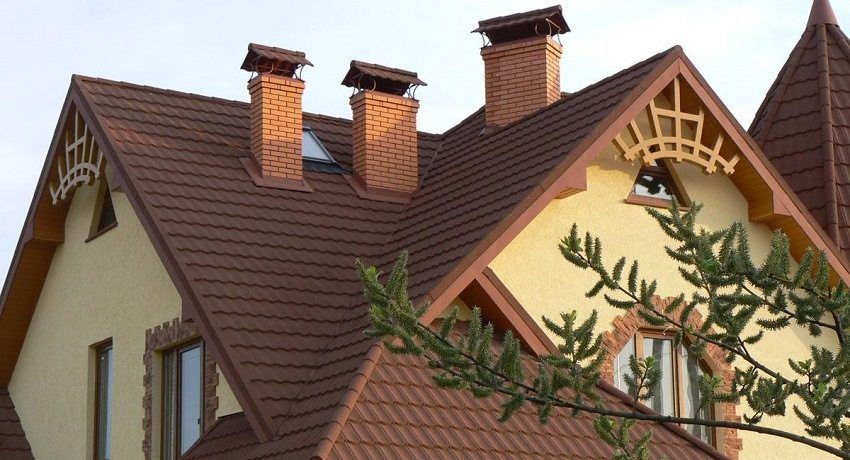Recently, PVC pipes for water supply are used more and more often, because the creation of any water supply system plays a special role in its durability, economy and durability. It is these qualities that distinguish PVC pipes. The task of any water supply system is to deliver not only technical water for irrigation, but also drinking water. Consequently, the water passing through the pipes must remain fresh and clean, so it is so important to choose the right material for the manufacture of the pipes.
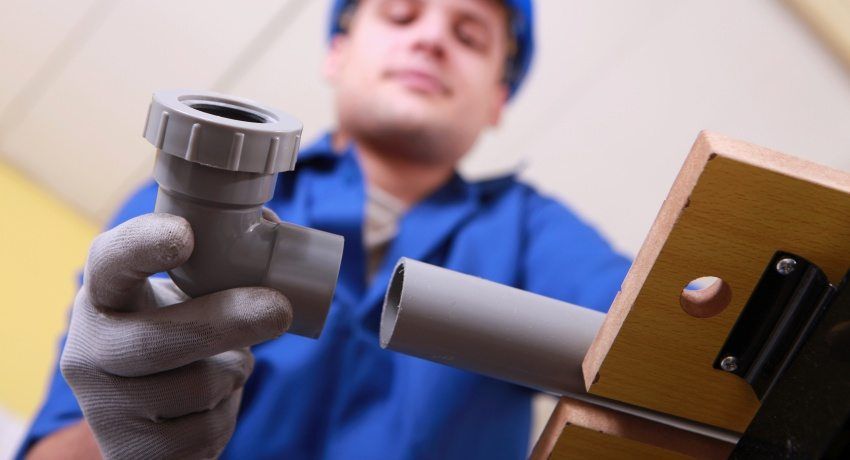
Technical characteristics of PVC pipes for plumbing
PVC pipes (polyvinyl chloride) are polymeric construction, which is significantly superior to other analogues in application options and technical data. The complex structure of the polymer made it possible to significantly improve the quality of the pipes, for example, to increase the impact strength and frost resistance. In the manufacture of pipes are not used toxic materials, they do not have a specific smell, therefore, they are ideal for drinking water and creating a summer water supply from plastic pipes.

Modern realities of life require new solutions and approaches in the field of building materials. Environmental problems are forcing people to more and more explore suburban areas. Holiday villages grow just before our eyes. And if the decision to build or purchase a portable home is solved simply, then the next pressing issue is water supply. It should be borne in mind that the need to supply both drinking water and for regular watering.
HDPE pipes for plumbing, their varieties and methods of installation. What it is, where they are applied, what kinds there are. The advantages and disadvantages of polyethylene pipes and methods of connection.
The choice of material for the pipeline is very extensive (iron, plastic, polyethylene). And among all this range, they are particularly distinguished by their unrivaled technical characteristics of PVC pipes. The main distinctive features of this type of pipe are as follows:
- low cost;
- long service life;
- are not subject to destruction from water streams and ultraviolet rays;
- they are not afraid of various alkalis and acids;
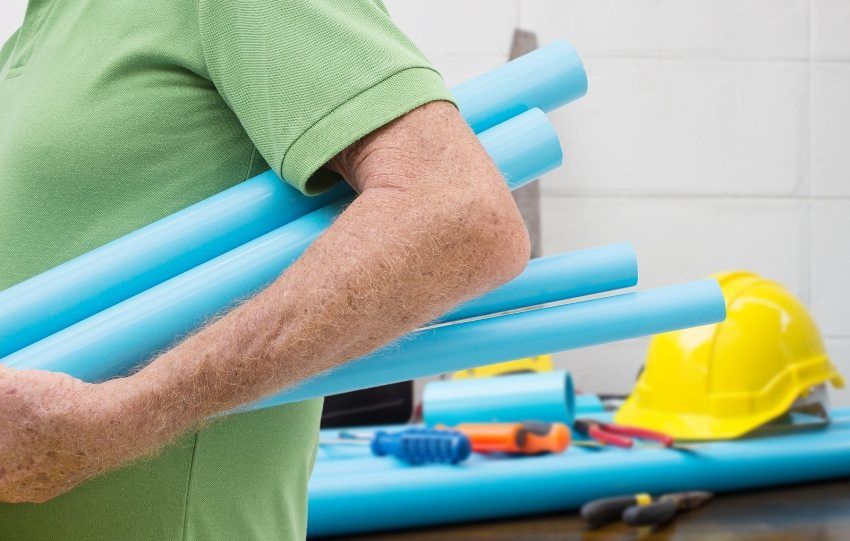
- ease of assembly of a common plumbing structure;
- do not collapse if the water inside is frozen;
- not afraid of small earthquakes (laying in the ground).
Choosing PVC pipes, you can be sure of their durability and reliability. Such a high-quality pipeline will serve you for more than a dozen years.
There is the following classification of PVC pipes:
- pressure head;
- free-flow;
- employees for the distillation of rarefied media.
Sometimes bells are installed at the ends of pipes for a more tight connection with each other. Installation of a house or at the cottage of plastic pipes for water supply, which do not have such an element, is made by mounting all the parts with the help of special glue.
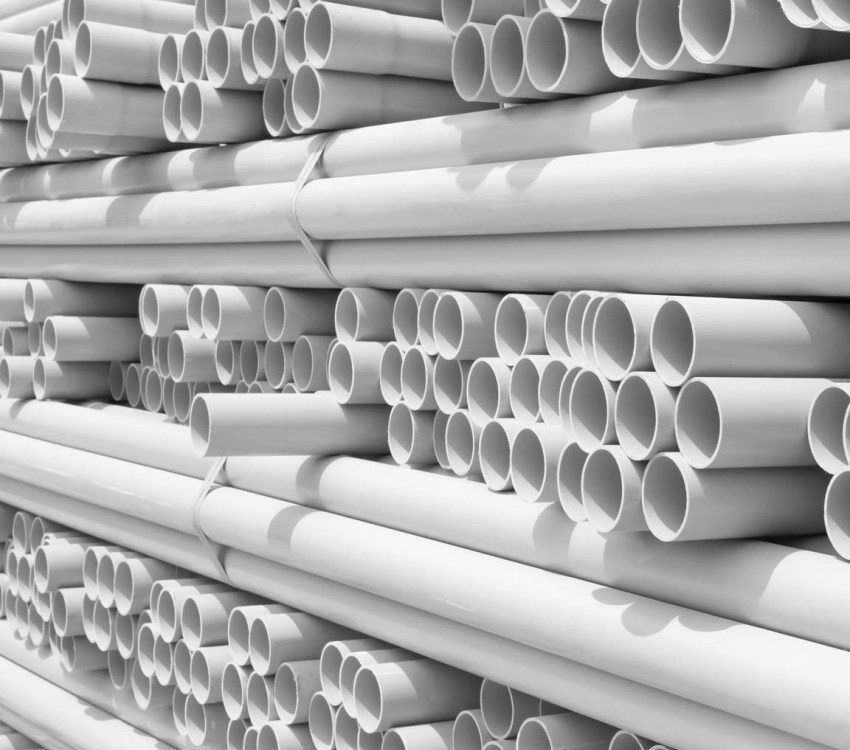
Pipes vary in size:
- Length: 1, 2, 3 and 6 m.
- Cross-section: the diameter of the plastic pipe for water supply can vary from 12 to 630 mm.
- Wall thickness
The operation of PVC pipes occurs at three pressure readings: 6, 10 and 16 atmospheres.
Important! Although PVC pipes can withstand temperatures up to 60 ° C, experts advise to limit the maximum mark when operating at 45 ° C.
Like any other building material, the use of PVC pipes has its pros and cons.

The advantages are in the following aspects:
- not explosive;
- low toxicity;
- increased resistance to various chemical influences;
- a light weight;
- excellent bandwidth;
- environmental Safety;
- no corrosive formations;
- do not ignite;
- long service life (over 55 years);
- good tolerance to water hammering;
- ease of installation;
- excellent thermal conductivity.
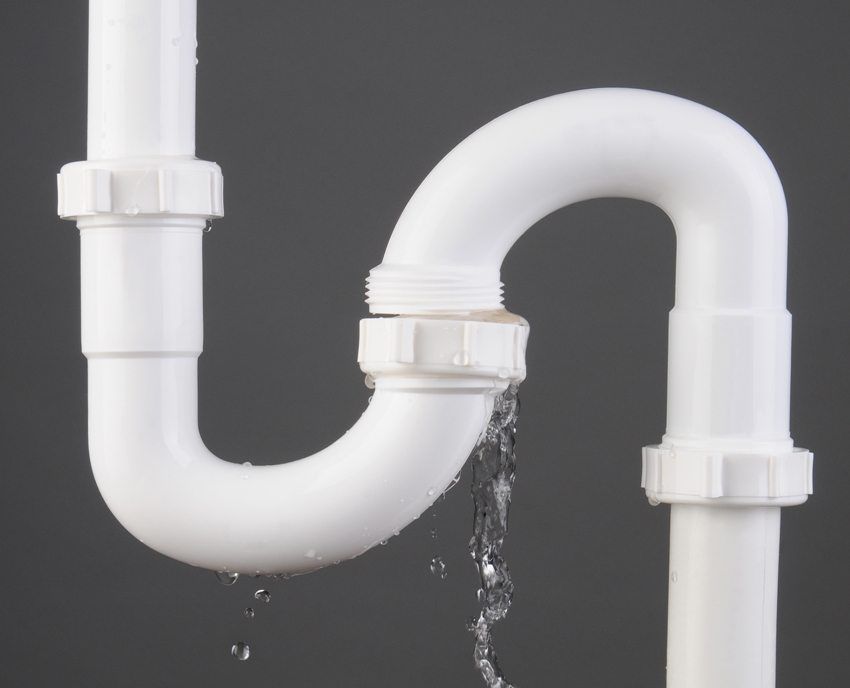
However, even with all the undoubted advantages, there are some disadvantages, such as:
- fear of heat;
- the need for thorough insulation at low temperatures;
- difficulty recycling.
When choosing PVC pipes for the construction of a water supply system, all aspects should be considered, ranging from the region of residence to the diameter of plastic pipes for water supply.
Any owner of the dacha knows that without regular watering it is not worth waiting for a good harvest. That is why, when arranging a suburban area, each summer resident solves one of the first problems of permanent water supply.
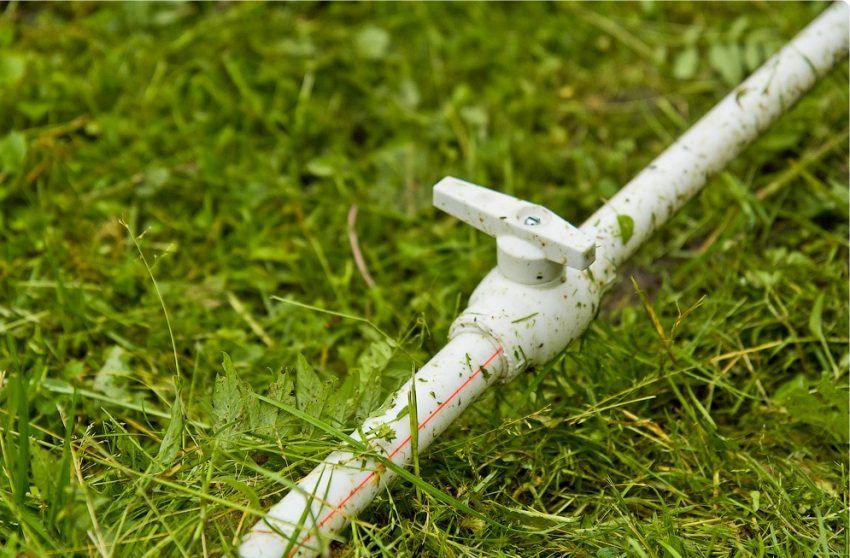
Since it is very troublesome and physically difficult to bring water in buckets from a nearby column or reservoir, the most effective solution is to arrange a polypropylene pipe in the country. Of course, for its installation will need appropriate financial costs and small physical skills. But as a result, you will have the opportunity to systematically water your garden.
Helpful advice! Before you begin to lay the water supply, be sure to draw a preliminary scheme, given the location of fruit trees, berry bushes, rows with vegetables.
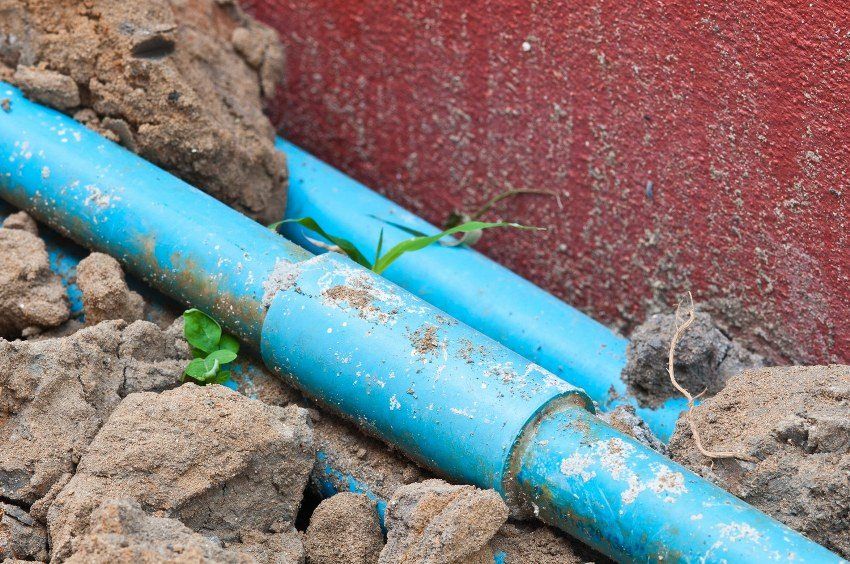
If you have a well or artesian well on the site, then you will be able to provide yourself with the cleanest water to drink. There are two types of dacha water pipe:
- Folding The pipes are laid on the surface of the earth and are connected in such a way that at the end of the season the water supply system can be easily disassembled into components and removed until next year. The advantage is minimal maintenance, the ability to connect to any water source and instant leak detection. The disadvantage is the annual disassembly of the structure for the winter period.
- Constant. To create this type of water supply, pipes are laid in dug trenches, which are covered with earth from above. The advantages are the ability to use this water supply system even in the cold season. The presence of pipes under the ground guarantees their safety from thieves. The disadvantages include a more time-consuming option of finding and eliminating leaks.

Before you start the structure of the summer water supply, decide in advance on its appearance in order to correctly draw up a cost estimate.
In order to comfortably live in a country house, having the opportunity to enjoy nature, clean air, tranquility and well-groomed house territory, you need to take care of the conditions of the aquatic life support system in advance. Consequently, the water supply system must be equipped in such a way that its performance and functionality does not depend on weather conditions (snow, hail, rain, heat). Properly chosen material and skillful laying of the pipeline is the key to a durable and reliable plumbing system.
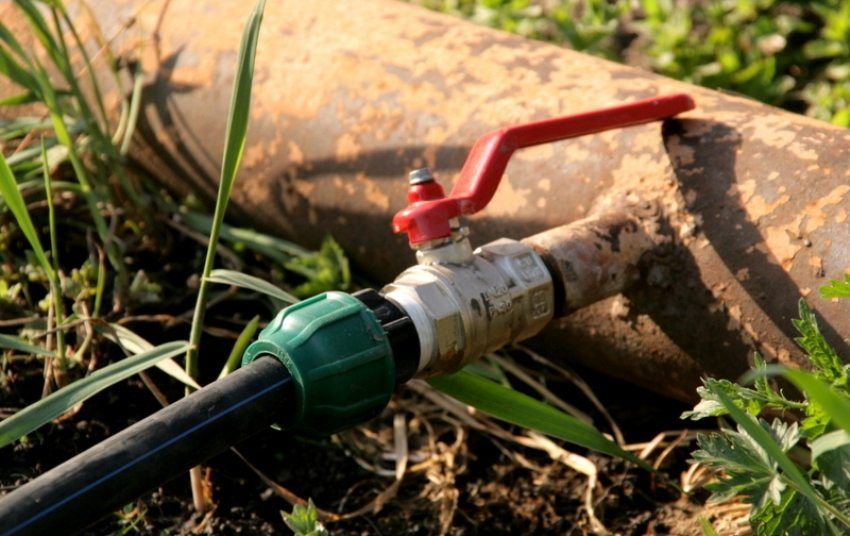
Need to start with the project. You do not need to be a professional engineer and precisely draw lines; it is enough to correctly reflect the location of the house, summer kitchen, flower garden, garden and vegetable garden on paper. That is, those places where there should be a regular supply of water. After that, you can make measurements, and it is better to add a little length, because some of the pipes will go to trimming and connecting.
Having drawn a general view of the water supply, carefully count all the turns of the pipes in order to know the required number of fittings. It is better to do the order once, so that the pipes, fittings and couplings are from the same batch.
Before laying the underground water supply, the question always arises: how deep should the pipes be buried? The owners of personal plots should not forget that the frosts will come, but some of the water will still remain in the pipes. According to the technical data, the minimum level for laying all street underground communications is 1.6 m.
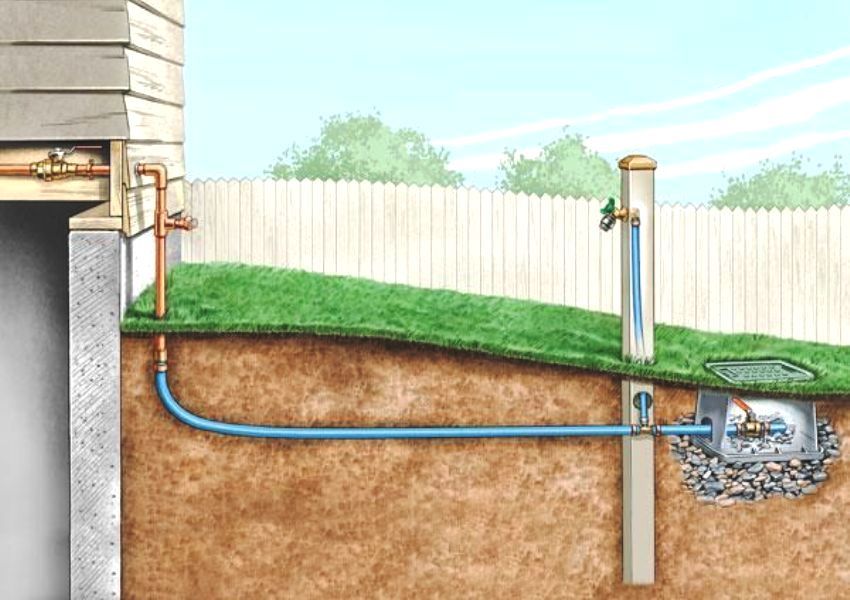
This parameter was calculated on the basis of various measurements of soil freezing. Therefore it is better not to risk and dig a trench of the indicated depth. This guarantees the performance of the pipeline in all weather conditions. If you are not able to make such a deep trench, then it is better to seek help from a local construction organization. Experts with an accuracy of a centimeter call you the level of freezing of land in your area. Naturally, you will have to pay for this service.
Important! Earth at a depth of 1.6 m never freezes through, the temperature at this level is always positive.
If the natural conditions do not allow making such a deep ditch (stone rock, clay), then it is necessary to pre-insulate the pipes. However, you should also not bury PVC pipes too deeply. Since the pressure can be very large, and the water supply will not stand, it will crack and allow leakage.
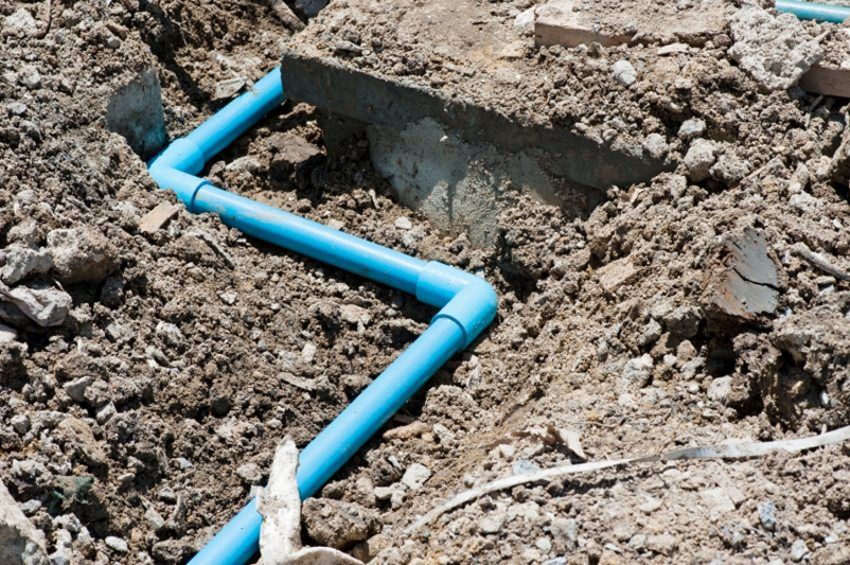
After complete installation of the entire summer water supply system, it is necessary to conduct an inspection. This must be done before the trench is covered with earth. Turn on the water first at low power, and then gradually increase the pressure. Carefully ensure that water never digs through and runs freely inside the pipes. Do not be lazy to bypass the pipeline along the entire length, paying special attention to the tightness of the joints. If you have not noticed any deviations from the norms, boldly bury the trench. The process of laying water pipe completed.
The use of such a basis as polyvinyl chloride significantly increased the strength and practicality of pipes and fittings for water supply, thereby sharply increasing the demand for similar building material among owners of summer cottages. Fittings are the parts required to connect PVC pipes. They also have high technical properties, such as:
- high chemical resistance;
- tightness;
- long term.
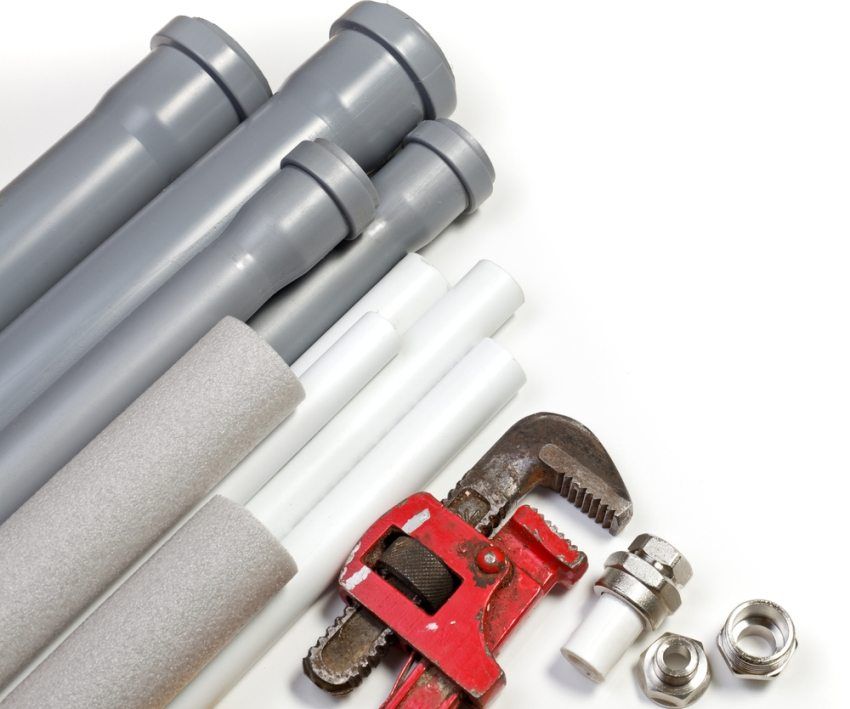
Important! PVC pipes and fittings are so environmentally safe that they have been certified by most European countries.
Fittings are deservedly the most versatile connecting structure. They are widely used for installation, the main thing is to choose them in accordance with the diameter of PVC pipes for plumbing. Since the material has a rather small weight, such pipes can be easily transported even to remote places of residence.
An additional advantage is the ease of installation, which is under the power of absolutely anyone. Also worth noting is the significant budget savings. Having spent a minimum of means, you receive own high-quality system of water supply on the personal plot.
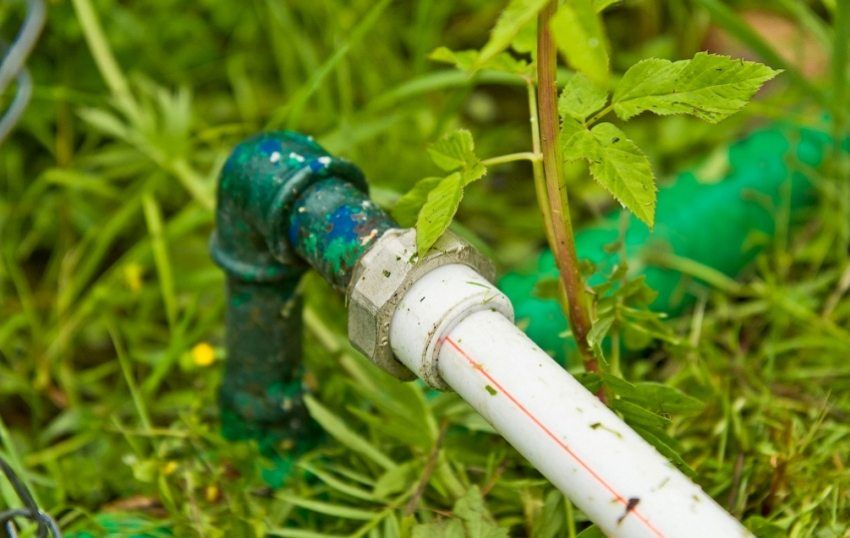
There are several basic ways to connect plastic pipes to create plumbing.
Gluing. Before starting the process, check the connection elements for compatibility. To do this, insert the pipe into the fitting – the entry must be two-thirds. For precise pipe cutting, use a knife or roller cutter. Then cut off the end cut with an emery paper or a regular file. Carefully remove shavings and flush the pipe. The cleaned surface is degreased.
Glue is applied to the inner surface of the connecting elements. Only after that the pipe is gently inserted into the fitting and rotated 1/4 of a turn. This ensures uniform distribution of the adhesive composition. Then the connection is fixed in manual mode for drying (approximately 25-35 seconds). The remains of glue are removed with a napkin.

Coupling connection. This type of connection is used if the pipe diameter exceeds 50 mm. A piece of pipe is attached to the coupling, making the appropriate markup. Glue is applied to the inner surface of the pipe and coupling, and carefully fixed according to the marks.
Flange connection. This method uses a rubber gasket that bolts the cast iron flange.
Into the socket. First, all the joining points are lubricated with a silicone compound (gasket, butt), and then the pipe is inserted into the socket to the appropriate mark.
Welding. The most reliable way to install. The pipes must be cut very evenly. With the help of special welding devices, the pipe ends are heated to the required temperature, and then they are tightly connected. This connection method is often used for laying pipelines underground.
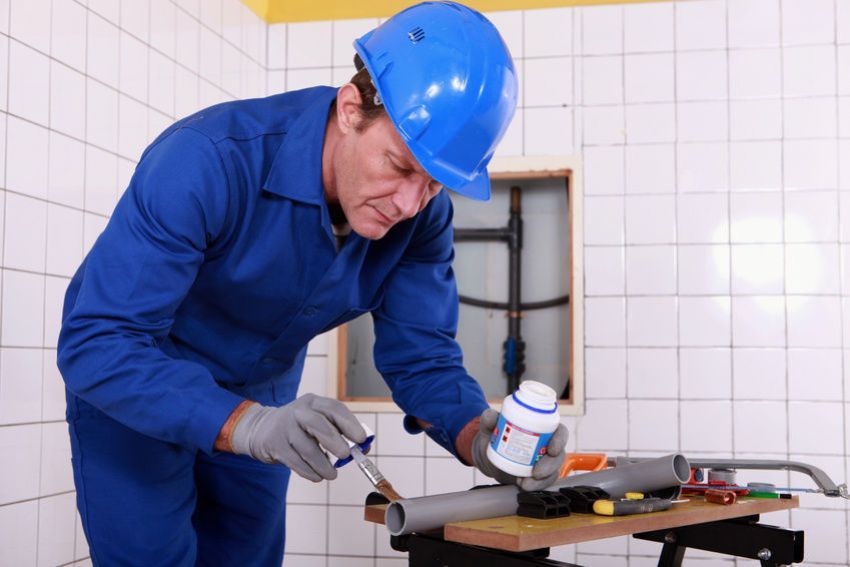
In the plumbing system is possible to use any of the above methods of fixing pipes. But before each start, it is necessary to carry out the preparatory stage It includes cutting lengths of the required length (be sure to check that all the diameters of the plastic pipes for the water supply system are the same), chamfering, cleaning the ends of the pipes and degreasing them.
Arrangement of plumbing in the garden of plastic pipes can significantly improve the living conditions for its owner. Using PVC pipes, you will create a solid and durable water supply system that allows you to efficiently exploit water resources.
